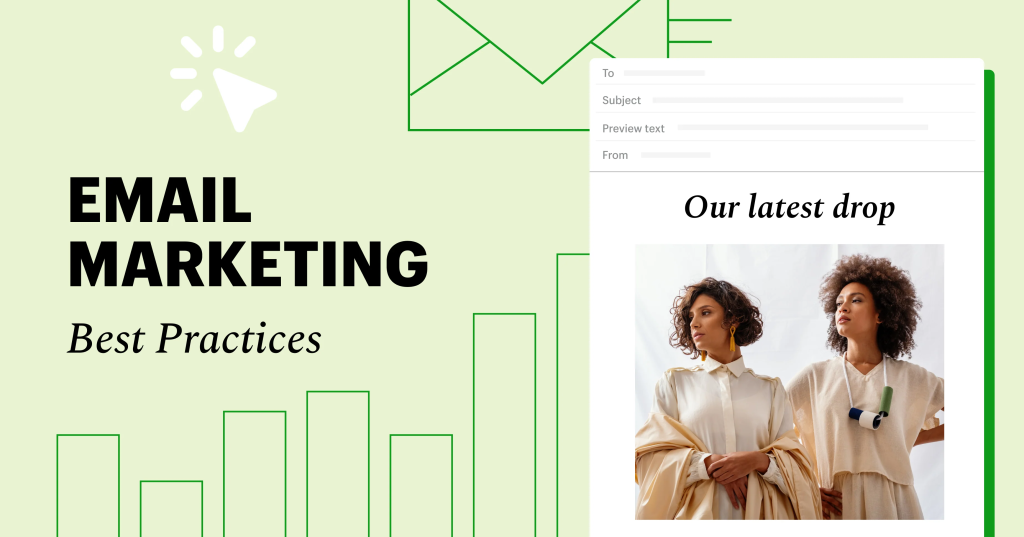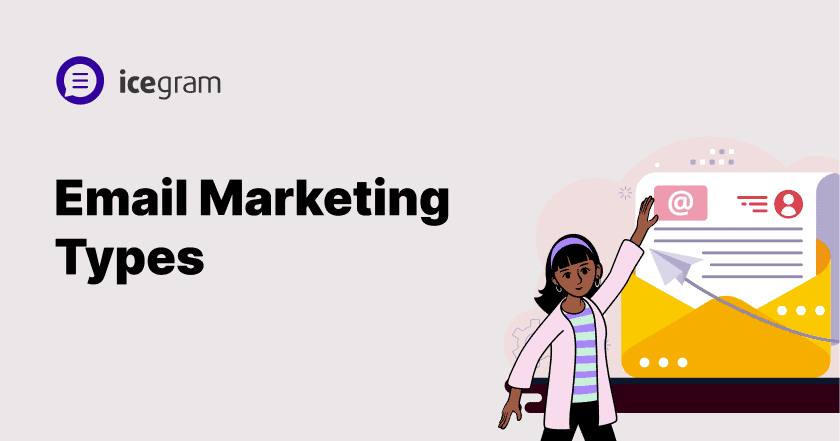1. Introduction
Email marketing is more than just sending out emails. It is a secret weapon that allows businesses to keep in touch with their audience, showcase their latest offerings, and guide customers towards making purchases. By mixing creativity with data-driven decision-making, email marketing can help businesses achieve their goals, whether it’s boosting brand awareness or gathering customer feedback.
In this article, we will explore the four main types of email marketing: transactional emails, promotional emails, retention emails, and newsletter emails. Each type serves a specific purpose and is best suited for particular situations. By understanding the nuances of these email types, businesses can craft effective email marketing campaigns that resonate with their audience and drive results.

2. Transactional Emails
Transactional emails are the unsung heroes of email marketing. They go beyond simple order confirmations or account updates – they are opportunities to deepen customer relationships and enhance brand image. When a customer makes an online purchase, a transactional email is sent to confirm the order. These emails act as friendly digital assistants, keeping customers in the loop and ensuring their satisfaction.
Key Elements of Transactional Emails
To ensure the effectiveness of transactional emails, certain key elements should be included:
- Personalization: Address recipients by name and tailor the content to their unique transaction or interaction.
- Clarity: Get straight to the point in the subject line by clearly stating the purpose of the email.
- Relevance: Only include information in the email that is directly related to the recipient’s transaction.
- Timeliness: Send transactional emails as soon as possible after the interaction occurs while it’s still fresh in the recipient’s mind.
- Branding: Ensure that transactional emails are consistent with the rest of your marketing materials.
Use of Transactional Emails
Transactional emails are best used in situations where:
- Confirmation of a transaction or account update is needed.
- Prompt communication of essential information is required.
- Enhanced customer service and trust-building are desired.
Tools like Icegram Express can automate the process of sending transactional emails, ensuring timely and accurate communication with customers.
3. Promotional Emails
Promotional emails are a powerful method for boosting sales. These emails are designed to encourage purchases by offering incentives, discounts, or special deals. They serve as a way to showcase products or services and provide customers with a compelling reason to buy.
Key Elements of Promotional Emails
While the content of promotional emails may vary depending on the specific offer or discount, there are key elements that every promotional email should include:
- Engaging subject line: Capture the reader’s attention and clearly convey the offer being promoted.
- Clear call-to-action: Make it evident what action you want readers to take, such as “Shop Now” or “Use This Discount Code.”
- Expiry date: Create a sense of urgency by mentioning the validity period of the offer.
- Visual appeal: Use high-quality images or graphics to make the email visually appealing.
Use of Promotional Emails
Promotional emails are effective in the following situations:
- Announcing a sale or special offer.
- Promoting a specific product or service.
- Driving immediate action from the recipient.
Icegram Express is a valuable tool for crafting compelling promotional emails that help businesses achieve their marketing goals.
4. Newsletter Emails
Newsletter emails are an essential component of email marketing. They allow businesses to keep in touch with their audience, build their brand, and remain top-of-mind. According to global statistics, 82% of marketers use email newsletters. But when and how should businesses effectively use them?

Effective Use of Newsletter Emails
To make the most out of newsletter emails, businesses should follow these tips:
- Set clear goals for the newsletter to guide content creation and measure effectiveness.
- Understand the audience by using demographic data and segmentation to tailor newsletters.
- Provide value to subscribers through educational content, special offers, or exclusive news.
- Keep the content concise and engaging to increase readership.
- Use headings and bullet points to organize information and make the email easier to digest.
- Establish a consistent send schedule to build trust and anticipation among subscribers.
Newsletter emails are used in the following situations:
- Building trust and encouraging repeat business.
- Sharing important information, industry trends, or news.
- Highlighting new products, special offers, or events to drive site traffic.
Icegram Express simplifies the creation and scheduling of newsletter emails, improving email marketing and audience communication.
5. Retention Emails
Retention emails play a vital role in keeping customers engaged and interested in a brand or its products. As one of the main types of email marketing, these emails aim to foster customer loyalty and encourage repeat business. Strategies for creating successful retention emails include personalization, offering valuable content, and regular communication.
Strategies for Successful Retention Emails
To create effective retention emails, businesses can employ the following strategies:
- Personalization: Use the recipient’s name, recommend products based on browsing history, or acknowledge special events.
- Valuable content: Provide product tips, industry news, and exclusive discounts.
- Regular communication: Send retention emails regularly without overwhelming customers.
- Customer feedback: Encourage customers to provide feedback through emails to engage them and gain valuable insights.
- Testing different types: Experiment with different types of retention emails to find what works best for the business.
Types of Retention Emails
There are several types of retention emails that can be used:
- Re-engagement emails: Sent to customers who haven’t interacted with the brand for a certain period.
- Thank you emails: Express gratitude for a purchase and encourage customers to return.
- Feedback emails: Seek opinions on a product or service from customers who have used it.
- Newsletter emails: Regularly share valuable content to keep the brand at the forefront of customers’ minds.
Use of Retention Emails
Retention emails are effective in the following situations:
- Keeping the brand top-of-mind for customers.
- Fostering customer loyalty and engagement.
- Maintaining an ongoing relationship with customers.
Icegram Express can automate retention email marketing strategies, ensuring optimal customer engagement. By understanding the strategies for creating effective retention emails, businesses can strengthen their customer relationships and drive long-term success.
6. Choosing the Right Type of Email Marketing
Understanding the various types of email marketing is crucial, but knowing when and where to use each type is equally important. The effectiveness of email marketing campaigns can significantly improve when the right type of email is matched with the appropriate situation.
To choose the right type of email marketing for your business, consider the following key points:
- Familiarize yourself with the types of email marketing available, such as transactional emails, promotional emails, retention emails, and acquisition emails.
- Determine your business needs and identify the type of email marketing that will be most effective in achieving your goals.
- Consider the situation and match the right type of email marketing to maximize its impact.
By strategically selecting the appropriate type of email marketing, businesses can enhance their overall email marketing strategy and achieve sustainable growth.
7. Running Effective Email Marketing Campaigns with Icegram Express
Running effective email marketing campaigns is crucial for businesses to engage and convert their audience. Icegram Express is a powerful tool that can help businesses craft irresistible emails, increase open rates, track and measure campaign success, and optimize their overall email marketing strategy.
Some key features of Icegram Express include:
- User-friendly interface: Craft compelling emails easily.
- Captivating recipients: Increase open rates and make emails stand out.
- Robust analytics: Track and measure campaign performance to make data-driven decisions.
By leveraging the capabilities of Icegram Express, businesses can take their email marketing campaigns to the next level and achieve sustainable growth.

8. Conclusion
In conclusion, email marketing is a valuable tool that businesses can utilize to promote their products, build relationships with customers, and drive action. By understanding the four main types of email marketing – transactional emails, promotional emails, retention emails, and newsletter emails – businesses can create effective email marketing campaigns that resonate with their audience and lead to sustainable growth.
Remember, the goal of any email marketing campaign is to engage and provide value to your audience. Whether you’re focused on confirming transactions, boosting sales, engaging customers, or sharing valuable content, each type of email marketing serves a specific purpose and can assist in achieving different business objectives.
If you’re ready to elevate your email marketing campaigns, start your journey with Icegram Express today and experience the difference it can make in your email marketing efforts!

